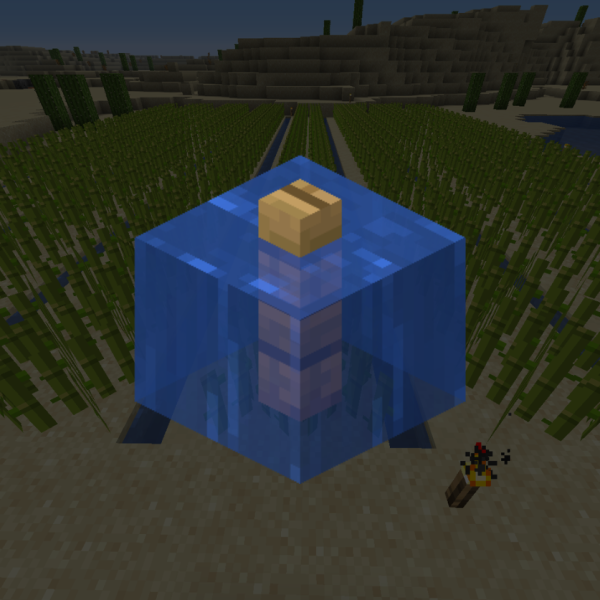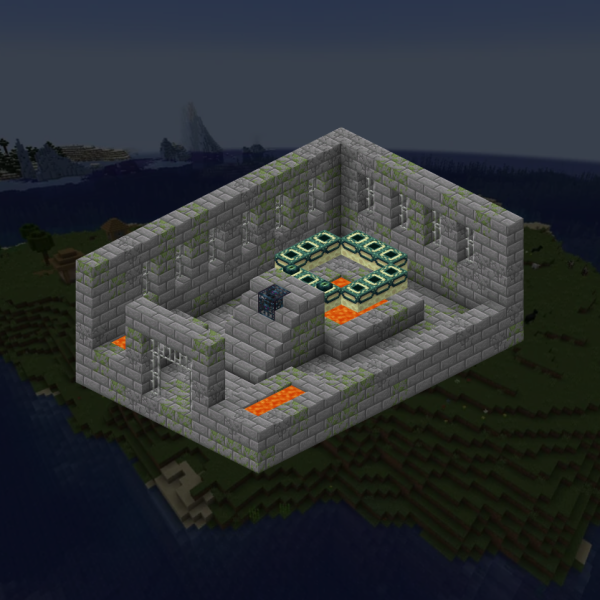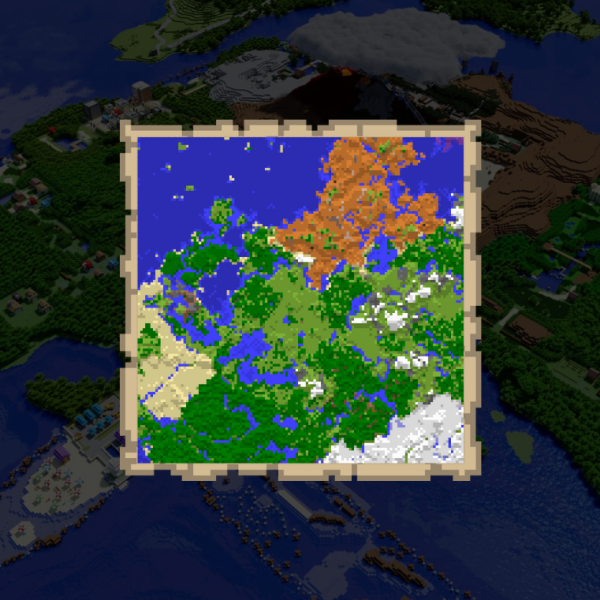The Best Ways to Use Wool in Minecraft for Crafting and Decoration
As you start your journey, you will quickly discover that gathering basic materials is absolutely necessary for you to survive and prosper. Among the most useful and foundational materials you can find is wool in Minecraft, which is a versatile block obtained from sheep and is dyeable, making it ideal for everything from making comfortable places to sleep to creating vibrant decorative structures.
In early versions of the game, wool was often referred to as ‘white cloth’ and served as the basic material for beds and tents.
This material is an essential resource that new players usually learn to acquire early in the game because of its critical uses. Whether your immediate goal is crafting your very first bed so you can safely skip the night, or you are planning to make stunning, colorful designs, you must master how to get wool in Minecraft efficiently to ensure your survival and building success as a beginner. The white variant serves as the undyed, natural wool block and is the starting point for dyeing into other colors.
We are going to guide you through every step of the process, starting with finding your first sheep and leading up to constructing a fully automated farm. By the time you finish this guide, you will be an expert at collecting every wool color possible and skillfully using these fundamental wool blocks in all your essential crafting and ambitious building projects.
What is wool in Minecraft
Wool is one of the most versatile and colorful blocks you can find in Minecraft, making it a staple for both survival and creative players. Obtained primarily from sheep, wool comes in a vibrant palette of 16 different colors, including classic shades like white, light gray, and gray, as well as more eye-catching options such as light blue, orange, and magenta. Each colored wool block can be used to add personality and flair to your builds, whether you’re crafting a cozy bed, designing a pixel art masterpiece, or decorating your base with banners and carpets.
The color of wool is not just for aesthetics, players can easily change the color of wool by dyeing it, allowing for endless customization and creativity. Wool blocks are also practical: while they are weak and flammable, they have unique properties such as dampening vibrations and reducing fall damage, making them useful in both technical builds and adventure maps. With so many wool colors to choose from, you can always find the perfect shade to match your vision and bring your Minecraft creations to life.
Core Methods of Obtaining Wool
When you start playing Minecraft, there are three primary ways you can obtain the essential resource of wool in Minecraft: using shears, eliminating a sheep, or crafting it from string. Each method has its own benefits and drawbacks concerning efficiency, speed, and sustainability.
Shearing Sheep
Shearing is the best and most sustainable method for acquiring large amounts of wool in Minecraft, as it lets you collect multiple blocks from one animal without causing it any harm. To begin this method, you will first need a crafting tool called shears, which you must create by placing two iron ingots diagonally on a crafting table. Every time you successfully use the shears on a sheep, it will drop white wool or other colored wool at a count of between one and three blocks of item wool for you to pick up and add to your inventory.
Most importantly, shearing provides a renewable resource because of the sheep’s natural mechanics. After a sheep has been sheared, it will immediately begin searching for and eating grass blocks to consume. This consumption of grass is the necessary action that allows the sheep to fully regrow its fleece, thereby ensuring that this is an endless source of wool blocks for you to rely on long-term.
Killing Sheep
If you find yourself in a quick emergency where you need wool in Minecraft instantly, or if you simply do not have the necessary iron to craft shears yet, killing a sheep is an immediate way to get wool, though it is not a sustainable practice. When you eliminate a sheep, it will drop white wool or any other existing color in a quantity of one to two blocks for you to collect and use right away.
The specific color of wool the sheep is currently displaying will always be the color of the wool dropped for you; for example, if you find a black sheep and kill it, you will certainly get black wool. While quickly killing a sheep can be useful in an immediate pinch, this practical approach is not a long-term solution and will consistently yield much less item wool over time compared to the ongoing, non-lethal practice of shearing sheep for sustainable gathering.
Crafting Wool from String
Wool can also be successfully created by converting string, a very common crafting material that you can find scattered all around your game world. This is a great alternative method that is particularly useful if you have an excessive amount of string from defeating many spiders. The specific crafting recipe for wool is straightforward: it requires you to place four pieces of string into a two-by-two square arrangement anywhere on your crafting table to successfully create one wool block.
You can easily get string by defeating spiders, or you can find it as chest loot in various structures, or simply by breaking cobwebs that you encounter in abandoned mineshafts and fortresses. While converting string is generally not as productive as the method of shearing sheep on a large scale for mass production, it serves as an excellent way to use up any surplus string you may have and create useful cloth blocks when sheep are not readily available.
Alternative Wool Sources in Minecraft
Sometimes, the quickest way to find a specific wool color is to look beyond the natural populations of sheep you might encounter. Naturally occurring wool can be found in various generated structures throughout the Minecraft world. By exploring or trading, you can often secure different wool colors without needing to shear or craft them yourself.
Chest Loot
Certain pre-generated structures that naturally appear in the game world can contain wool blocks inside their chests, which can provide you with a small, quick supply of various colors when you need them immediately.
- Search Generated Structures: Actively look inside chests located within various structures, such as within villages, searching through shipwrecks, or exploring the complex tunnels of strongholds. You might find white wool or gray wool.
- Understand Probabilities: The odds of successfully finding any wool in Minecraft as chest loot can vary significantly because the chance is based on the specific type of structure you are exploring and the determined probabilities of its unique loot table.
This means that while chest loot is a nice bonus, it is generally not a reliable way to get wool blocks in large quantities, but it is great for a small boost.
Trading with Villagers
Villagers, especially those who have the profession of Shepherd, offer a dependable and straightforward way for you to buy different wool blocks using emeralds.
- Locate a Shepherd: Find the Shepherd villager, who is identified by their job site, which is the Loom block; these villagers will trade various item wool for your valuable emeralds.
- Check Trade Levels: As you successfully unlock higher trade levels with a Shepherd, they will start to offer a wider variety of wool color options, which can include the basic white wool and even some specific colored wool types.
This makes trading a good way to get a consistent supply of a specific wool color once you have a stable source of emeralds, ensuring you always have the shades you need.
Wandering Traders
The Wandering Trader is a rare, passive character that will spontaneously appear near you, often offering a curated selection of unique items, sometimes including specific colored wool.
- Wait for the Appearance: The Wandering Trader appears randomly near the player and is accompanied by two leashed llamas.
- Review Trade Offers: The trade offers from this mob usually include an offer to sell two randomly chosen wool blocks to you for the cost of just one emerald each.
However, the wool availability and randomness from the Wandering Trader means this is not a reliable source of wool because the trader’s inventory is completely random and unpredictable. Despite the randomness, it does offer an occasional chance to obtain quick access to certain rare colors like pink wool or yellow wool that you might not have the dye for yet.
Wool Color Variants
Naturally, sheep can spawn with a few distinct classic wool colors, but you gain access to the vast majority of the 16 possible shades in the wool color palette through the process of dyeing. The white wool variant is the base undyed block and serves as the starting point for dye wool into any of the other colors.
The available wool colors in the game are:
- Red
- Orange wool
- Yellow wool
- Lime
- Green
- Cyan wool
- Light blue
- Blue wool
- Purple
- Magenta wool
- Pink wool
- Brown wool
- Black wool
- Gray wool
- Light gray
- White
Dyeing Wool
Dyeing is the essential process of using various color pigments to transform the fundamental color of wool from its default white wool state into one of the other available shades. You can craft all the different dyes from flowers, various minerals, and other specific items you find in the world; for instance, you can successfully get blue dye from lapis lazuli and yellow wool dye from sunflowers.
To create a corresponding colored wool, such as red wool or cyan wool, you simply combine one block of white wool with any single dye item in a crafting recipe. There are a total of 16 possible wool color variants in the game, which together include a broad range of shades like magenta wool, vibrant orange wool, light blue wool, and deep black wool.
Dyed Sheep Mechanics
Instead of choosing to dye wool in its block form after you have collected it, you have the more efficient option to apply the dye directly to the sheep itself while it is grazing. You simply need to use any dye item on a sheep that has not been dyed yet, and this action will permanently change the color of wool that it grows, effectively creating a pink sheep or a brown sheep.
When you engage in the shearing sheep process on an animal that has already been dyed, it will consistently yield colored wool of the very same color you applied, and the sheep’s fleece will also regrow in that same dyed color. Furthermore, if you breed two sheep that have already been dyed, the resulting baby sheep may display a mixed color of the two parents or simply inherit the color of one of them.
Getting All 16 Wool Colors
For players who enjoy intricate building and detailed decoration, successfully collecting the full spectrum of wool color variants is a very common and rewarding goal. A highly effective strategy for full palette acquisition is to dedicate separate, clearly labeled pens for a flock of sheep of each of the 16 dyed colors. This systematic approach ensures that you have a constant and manageable supply of every colored wool block.
For storage and sorting tips, it is highly recommended that you use labeled chests or even Shulker boxes to keep your extensive collection of different wool blocks well-organized and easy to find. Proper organization ensures you can quickly locate shades like light gray wool and vibrant blue wool without having to search through stacks of other materials.
Wool Farming and Automation
If you plan on creating large, complex construction projects, you will require a very substantial and reliable supply of wool in Minecraft, which is best achieved by setting up a dedicated farm. You can choose between a simple manual setup that you manage yourself or an advanced automatic farm powered by Redstone to handle the heavy lifting.
Manual Wool Farm Setup
A basic farm setup that does not rely on complex Redstone circuits only requires you to create a secure, simple enclosure for your sheep. This process is straightforward and relies on providing the right environment:
- Construct Sheep Pens: You should construct a secure, well-lit enclosure that uses a fence or a wall that is at least two blocks high to effectively contain your entire sheep flock.
- Manage Grass Blocks: You must ensure that the floor of the pen is covered with dirt that has grown into grass blocks, as the sheep actively eat this grass to enable their wool receding back onto their bodies after you perform shearing sheep.
Automatic Wool Farm Design
Automation dramatically increases your wool collection rate while requiring very minimal effort from you after the initial setup. This design uses a combination of Redstone components to manage the shearing process automatically.
- Implement Observer + Dispenser System: The most popular and efficient design utilizes an Observer block to immediately detect the exact moment a sheep eats a grass block, which then triggers a Dispenser tool that is loaded with shears to automatically shear the sheep.
- Set Up Redstone Layout and Collection: This automated system requires only a simple Redstone circuit to connect the Observer to the Dispenser and a collection system made of Hoppers and Chests to collect the resulting item wool.
- Manage Shear Durability: Since the shears inside the Dispenser will eventually break due to wear, you will need to remember to periodically open the Dispenser and replace them with new ones to ensure continuous collection of wool generated.
Optimizing Wool Production
When working on large building projects, it becomes necessary to maximize the output from your wool farm to meet demand. Achieving this requires careful planning and management of your flock and farm mechanics.
- Sheep Density: While you can safely keep a large number of sheep within a confined area, be aware that placing too many sheep in a small space can negatively impact your game’s overall performance.
- Color Separation: It is highly beneficial to keep different wool colors in entirely separate automatic farms or pens to prevent any mixing and to simplify the sorting process of your light blue wool from your white wool.
- Lag Prevention Tips: To help reduce lag in your game, you should aim to minimize the total number of live entities and complex Redstone circuits running at the same time, which ensures your wool Minecraft farm operates smoothly.
Biome and Spawn Considerations
Sheep can be encountered in many areas, but certain biomes are naturally more suitable for establishing the initial location of your farm due to higher natural sheep populations. Understanding how and where sheep spawn is an important piece of knowledge for any player looking to build a large and reliable flock.
Best Biomes to Find Sheep
Sheep naturally prefer to inhabit areas where there is a generous supply of grass for grazing and regrowing their fleece. The best places to look are the Plains, Savanna, and Mountain biomes, as these expansive, open areas have high spawn rates for all passive mobs. This makes them the ideal places to easily find large numbers of white sheep, sources of gray wool, and other naturally colored wool varieties.
Generally speaking, the flatter, open biomes will consistently offer you the highest density of sheep that are easily accessible for you to start your farming efforts. Beginning your wool collection in one of these preferred biomes can significantly speed up the early stages of building your flock.
Sheep Spawn Mechanics
Understanding how sheep naturally appear in the world is very helpful for managing and expanding your existing flock through breeding.
- Natural Spawn Rules: Sheep are among the most common passive mobs in the game and will naturally spawn only on top of grass blocks that have a light level of 7 or higher.
- Breeding and Respawning: By feeding two adult sheep the crop known as wheat, you can successfully breed them, which results in the immediate appearance of a new baby sheep; this is the main way to quickly increase the size of your flock.
Transporting Sheep
To centralize your wool operation and make managing your flock easier, you will need an efficient way to move sheep from where they spawn to your chosen base location.
- Select a Method: You have several options for transporting them, including using a lead to gently pull them across land, utilizing a boat to move them across bodies of water, or employing a minecart for longer-distance travel across multiple biomes.
- Cross-biome Relocation: It is best to move the sheep back to your main base, as this simple action ensures that all your wool generated is conveniently located and easily managed in one place near your chests and crafting areas.
Wool Usage in Minecraft
Wool is a material that is far more valuable than just a simple decoration; it is a fundamental crafting material with a wide range of practical applications for survival, building, and even technical projects. Learning to utilize it effectively will quickly enhance your overall gameplay experience.
Wool Crafting Recipes
Wool is a primary ingredient in a number of important items, ranging from essential early-game tools to late-game decorative pieces. The most crucial use is in crafting beds (which requires three blocks of wool blocks and three wood planks) to establish a safe respawn point and skip the dangerous night, which is one of the first survival goals you will have.
Beyond beds, wool is essential for various decorative items. For example, you also need one wool and one stick to successfully make a painting, and wool is a core component for making decorative carpets and colorful banners to customize your base and add personalized markings.
Building Applications
The availability of 16 distinct wool color options makes wool a very powerful and flexible building material for aesthetic purposes. Wool blocks naturally give your structures a unique, softer texture and a broad color spectrum, allowing you to create vibrant, custom details, such as bright orange and magenta wool roofs or multi-colored walls that really stand out.
Many experienced players utilize the different cloth colors to clearly mark important pathways, effectively organize their storage chests, or create distinct, easily identifiable zones within a larger base structure. This method of color-coded systems is great for keeping large, complex bases manageable and organized.
Redstone and Technical Uses
Wool possesses a few subtle properties that make it a surprisingly valuable block in advanced technical contraptions, which is an important consideration for players who delve into Redstone engineering.
First, wool is one of the few blocks in the game that noticeably reduces or wool damps vibrations from sound, which is highly useful when building quiet areas or dampening loud machine noise within your base. Additionally, in advanced Redstone builds, wool is often used because of how it interacts with the Redstone dust and surrounding blocks, often serving as a reliable and non-moving solid block for the electrical circuit.
Game Mode and Version Differences
The exact methods you use to interact with and acquire wool in Minecraft may have minor variations depending on the game mode you are playing and the specific game version you are running.
Survival Mode Strategies
When playing in Survival Mode, your primary focus should be on resource sustainability. The most effective strategy is to prioritize mastering the technique of shearing sheep and then establishing a fully automated farm to guarantee a dependable supply of item wool.
Creative Mode Access
If you are playing in Creative Mode, you will find that all 16 distinct colored wool variants are immediately and freely accessible within your inventory tabs, allowing you to place any wool blocks instantly without any need for gathering them.
Java vs Bedrock Mechanics
While the fundamental methods for obtaining wool in Minecraft remain the same color and process across both the Java and Bedrock Editions, you may notice small, subtle differences in how Redstone components function in complex automated farms.
Snapshot and Update Changes
The game of Minecraft is continuously being updated, so you should always review the latest patch notes; game mechanics, such as the visual wool textures or the spawn rates for a rare pink sheep, could occasionally be altered.
Trivia and Edge Cases
The long history of wool in Minecraft has resulted in a few entertaining and unique quirks that players have discovered.
Jeb_ Sheep and Color Cycling
If you use a name tag to rename a sheep with the specific name “jeb_”, the color of wool that you see it displaying will constantly and quickly cycle through all 16 available colors, creating a dazzling rainbow wool visual effect. However, when you shear this sheep, it will only drop white wool or whatever its original, base wool color was before it was renamed.
Wool in Adventure Maps
Creators of complex Adventure Maps frequently use cloth blocks to construct unique, highly thematic structures such as functional woolen tents or other intricate decorative features to enhance the map environment.
Wool in Mods and Resource Packs
It is common for some mods or resource packs to introduce completely new wool textures or alternative dyed wool textures, which can alter the way wool blocks look or even give them entirely new functions within the game.
Community and Resources
The Minecraft community is a treasure trove of knowledge and inspiration for working with colored wool and wool blocks. There are countless resources available to help you master every aspect of wool in Minecraft, whether you are learning to dye wool or searching for complex design ideas.
- Online Tutorials and Guides: These resources walk you through crafting colored wool blocks, using them in creative projects, and even automating your wool farms for maximum efficiency.
- Forums and Social Media: Players frequently share their wool-based creations and tips, making it easy to connect with others who share your passion for vibrant builds.
- YouTube: This platform is filled with building tutorials, Let’s Play series, and showcases that highlight innovative uses for colored wool, such as rainbow sheep farms and intricate pixel art.
- Official Minecraft Wiki: This resource offers comprehensive details on how to dye wool, the history of wool blocks, crafting recipes, and more.
Conclusion
Successfully acquiring wool in Minecraft is a vital part of both survival and creative building.
The most effective and sustainable method for getting the wool you need is through the process of shearing sheep. If shearing is not an option, remember you always have the backup choices of crafting it from string or trading with friendly villagers for any specific colored wool you might require.
The most recommended practices for high-volume wool farming involve these steps:
- Set Up Dedicated Pens: Use secure pens for your different color flocks, such as those that give you gray wool or black wool.
- Automate Shearing: Gradually work toward automating the tedious shearing sheep process with efficient Redstone mechanisms.
You should begin with a simple pen and scale up to a fully automated system to guarantee you have a truly endless supply of this incredibly versatile crafting material.




